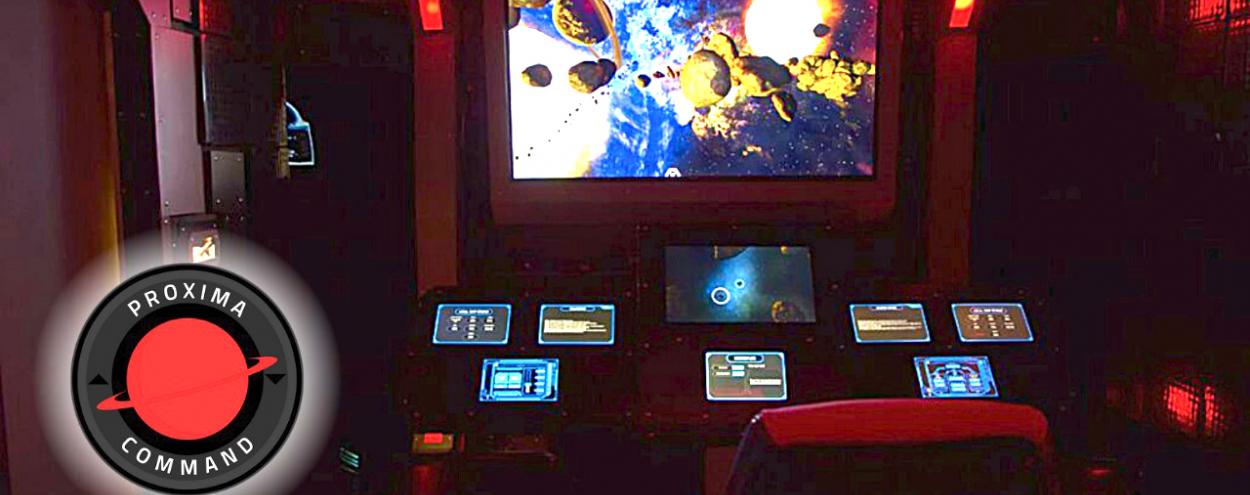
Prefixcode Inc. is an entertainment company with a mission to become a leader in the escape room business. Their premier part-escape room, part-video game simulator Proxima Command is an immersive game experience for teams of four to seven players that simulates the bridge of a futuristic starship. The stations can be described as digital puzzles on nearly 30 WiFi-connected touch screen tablets.
“It's totally immersive,” says Michael Chapman, co-founder of the company. “We've tried to create an experience where people can walk into an episode of their favourite sci-fi show. But instead of watching, you can actually participate and make decisions that have consequences.”
After nearly two years of running a successful escape room, the company decided to add another themed room, aiming to accommodate more customers.
“Generally, when we bring customers in, it's about five to seven people. But we’ve had groups of two or three, or up to 38, and we've had to turn them away,” says Chapman. “It’s just a lost business opportunity. So by having two rooms we’ll be able to widen our customer range and accommodate more people in a two hour game slot.”
That is when the George Brown College relationship became even more important.
An interesting challenge
“When I first met the Proxima team, they were pitching the idea of an escape room with custom interconnecting puzzles,” says Ryan Billinger, Principal Investigator and a faculty member at the School of Mechanical Engineering Technologies. “It was a really interesting challenge. And that’s one thing we’re good at, solving challenges.”
The projects are all run through the Product Development Exchange, a GBC Research & Innovation program area that focuses on helping local industries design, prototype and validate a variety of new products and services.
The company had previously worked with George Brown researchers on a number of projects, including a 3D animated walkthrough to illustrate their future plans for an immersive sci-fi entertainment complex. They also designed and built special holders for the touch screen tablets that improved both function and aesthetics.
Building the puzzle pieces
This newest project is a space station theme that uses physical controls like buttons, switches and dials rather than touch screens. The room has 11 interconnected hardwired puzzles that made up the research for the George Brown team.
“The biggest challenge to date was on the programming side—there were 11 puzzles, and they all need to talk to each other and communicate,” says Billinger. “On the inside, it's all custom hardware. Then we designed and built all the circuit boards, the network system — all integrated seamlessly. There’s quite an intricate mechanical aspect to these puzzles, and they’re built to withstand a lot of wear and tear.”
The result was a complex yet compelling game play experience. “If you asked me to go into their escape room right now and solve those puzzles, even after building them it’d still be challenging,” says Billinger.
The company recently launched a Kickstarter campaign to help fund the completion of their newest escape room.
Growing interest in escape room experiences
The company believes the appeal of the escape room experience has become stronger than ever in the wake of COVID-19 lockdowns. “There's other stuff out there, there’s video games, there's VR, but people are social animals,” says Chapman. “Having been through the pandemic, that social element that people get really sets it apart.”
Looking forward, the company plans to franchise their escape rooms as a turnkey product to other entertainment venues. Once again they’ll be turning to the George Brown research team.
“When we initially approached the college, Ryan said, and I'll never forget this, it’s not what we can do for you. The shorter list is what we can’t do for you,” says Chapman. “The more we work with the George Brown team, the more we get a sense of what is possible. We’re hungry to do more. We just love creating.”
Related:
Faculty Research Spotlight: Research project tackles the power of peer support with JAVAconnects
Faculty Research Spotlight: Job Talks Access project aims to promote accessible employment
